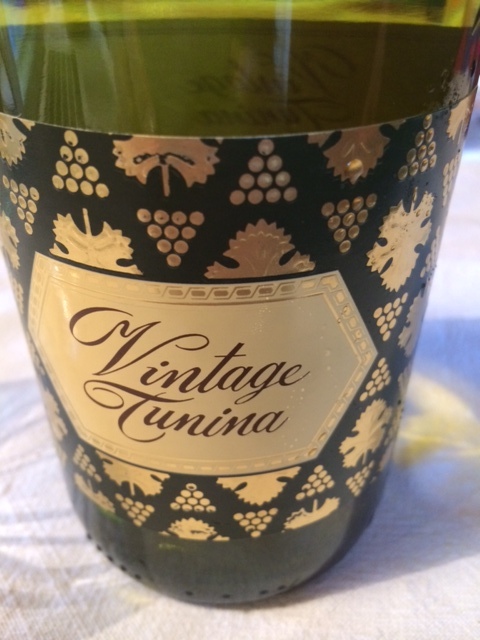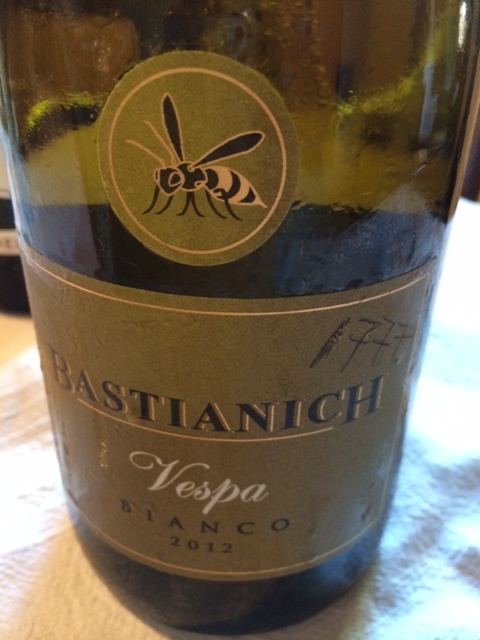Tasting Report: 70 Outstandingly Complex New-Release Whites From Friuli & More Alto Adige

“It was an was extremely hot year for Friuli,” explains Gianfranco Gallo of Vie di Romans, whose chardonnay this year scored 94 points and is, as James puts it: “Rich, oily…with an intense, caramel-like finish.” Despite its rich character, it’s a wine that underwent no malolactic fermentation or ageing in barrique, partly because there’s not such a tradition in Friuli, but also to conserve acidity in the wine. “It was difficult in 2012 to keep up the freshness you need for drinkability in white wines,” continues Gallo. “All the same, with proper irrigation and clay soils, the vine struggled but did not go into hydraulic stress, allowing for superb wines that boast exceptional structure and depth.”
Meanwhile, the 2013 harvest posed the reverse and more challenging problem of grapes not ripening – not unlike what vintners across Europe are having to deal with this autumn. Indeed, one of the biggest triumphs of the 2013 vintage to seek out is Tenuta Luisa’s 94-point friulano, where the slightly less acidic indigenous grape variety offers “focused structure” even given a “slightly green tinge.” Michele Luisa from the estate comments that these are wines with good ageing prospects best left a short while to settle.
All this talk of full-flavored and drinkable white wine in a vintage such as 2012 brings to mind the fascinating beginnings of quality white wine in Northern Italy, or indeed the whole peninsula. It was innovators such as Silvio Jermann who set the way for complex yet balanced Italian white wine. In 1975, by combining the then often “green” international grape varieties of chardonnay and sauvignon blanc with the less sour local friulano and ribolla gialla, as well as harvesting later at a time when picking early was rife, Jermann was able to create one of the first commercial Italian white blends, Vintage Tunina.
“I originally conceived the idea when I was still at school,” he recalls. “In fact, the tradition is Austrian-Hungarian (Friuli shares a border with Austria), whereby the peasants would bottle a house wine from many different vines. I wanted to follow in my father’s footsteps but at the same time make a wine of body and structure that could still stand the test of time.” James scored the 2012 Vintage Tunina 94 points.

“My father took inspiration from Burgundy, but what he wanted most of all was to let Friuli and in particular the terroir of the Colli Orientali (one of the 11 DOCs or Denominazione di Origine Controllata e Garantita) come through in the wine,” says Andrea Felluga, son of Livio who now manages the estate. “Although we have a relatively short history of modern winemaking, viticulture goes back a millennium, and this is the potential my father saw for the region back in the ‘60s.”
Felluga has arguably done the most in changing the image of pinot grigio from a simple, one-dimensional and neutral white wine, to a fruity, international superstar. Today he focuses mostly on his Abbazia di Rosazzo project, a collaboration with the ancient local abbey where wine has been made since the 11th century and some even say the variety of ribolla gialla originated. James scored the 2012 Abbazia di Rosazzo 93 points and the Pinot Grigio 91 points.
Ultimately, it is the meeting of history and acceptance of innovation that sets Northern Italy apart from the rest of the country for white wine, and a huge part of this comes down to the tradition of making carefully selected blends. Last summer, James and I were lucky to be among the first to sample Cantina Terlano’s Terlaner Primo, the new “super blend” from Alto Adige of 85 percent pinot bianco, 10 percent chardonnay and five percent sauvignon blanc. Not only are the grape varieties chosen from the best parcels of the estate, but even different vintages are meticulously assembled – the majority being 2011, but with smaller proportions of 2010 and 2009.
As Klaus Gasser, head of marketing and sales, is quick to point out: “Our aim with the Terlaner Primo was to provide richness but also dimension, depth and tension. However, our main concern was to follow in the tradition, which at our winery means blending pinot bianco and dates back to 1893.” James scored the Terlaner Primo 97 points, calling it one of the “greatest dry white wines of Italy.” It most definitely stands at the pinnacle of a long and awe-inspiring tradition.
As well as all the Friuli notes and the Terlaner Primo, included below are other Alto Adige notes and scores not previously posted.
-Jack Suckling